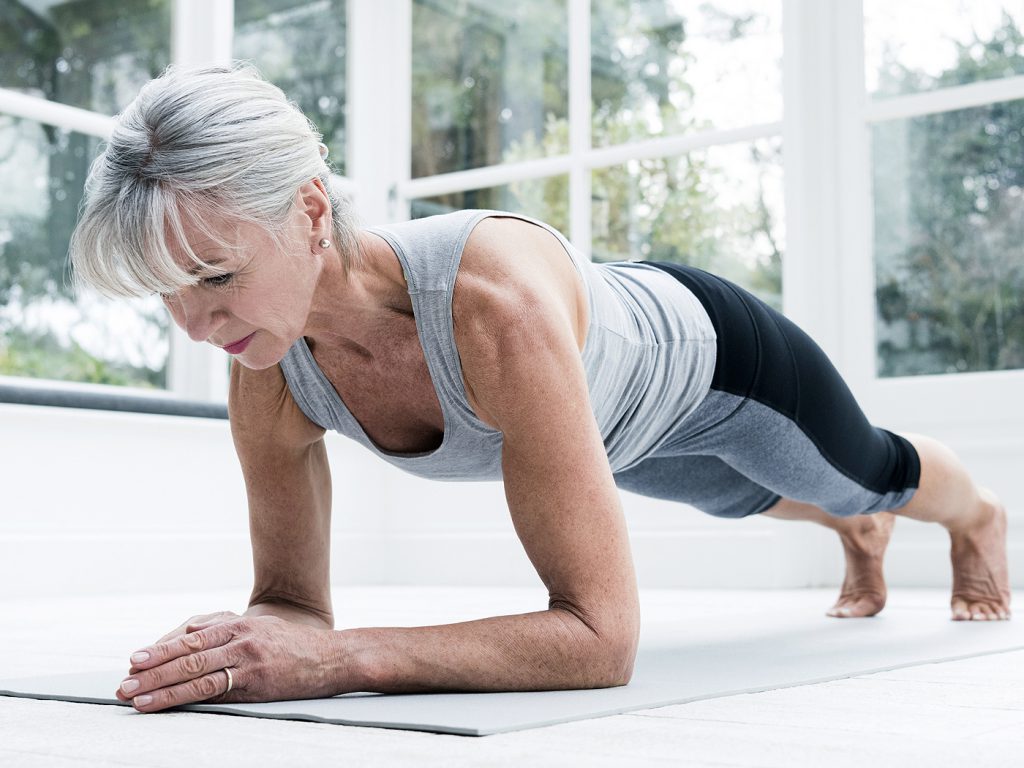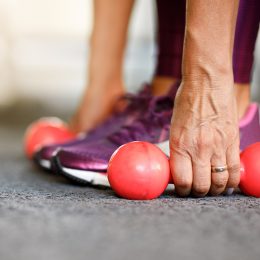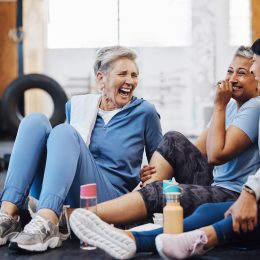Your 4 Biggest Core Questions, Answered
If your body were the solar system, your core would be the sun. Here’s how to make sure it shines.

There are abs, and then there’s your core. Not sure of the difference? Neither are most people. But it really does matter. Here, find four need-to-know facts about your core, plus how to train it for better strength, stability, and total-body health.
1. What’s the Core Exactly?
If it isn’t an arm, leg, or head, it’s probably part of your core. The most famous core muscle, the rectus abdominis, sits on the front of the stomach and creates the six-pack look on extremely fit individuals.
But the core is so much more than that. Underneath the rectus abdominis, the abdomen is also home to the internal and external obliques (along the sides of your torso), the transverse abdominis (the deepest layer of the core muscles), the pelvic floor muscles (which support the bladder and other pelvic organs), and the multifidus and erector spinae muscles (around your spine), explains physical therapist Leython Williams, D.P.T., a physical therapist and facility manager at Athletico Physical Therapy in Lincolnshire, Illinois.
Most fitness professionals also consider the gluteal muscles (in the butt and hips), lats and traps (in the middle and upper back), and all other torso muscles to be part of the core.
2. What Does the Core Do?
The core is, quite literally, at the center of everything you do. “From the moment we get up in the morning to the moment we go to bed at night,” says Williams, “we are depending on our core muscles to get us through our day. The core acts as our body’s stabilizer and a force-transfer center.”
Along with protecting your spine, shoulder blades, ribs, and pelvis, the core muscles allow you to bend, twist, and otherwise move your torso. When you get up out of a chair, put groceries away on a shelf, or just walk down the street, your core is hard at work.
3. What Are the Best Exercises for Strengthening the Core?
“As we get older, the core is one of the first parts of the body to get weaker,” Williams says. “Thus, it requires more intentionality to maintain strength and stability at our body’s power center.”
And while traditional core-specific exercises such as the superman and side bridge train the muscles of the core, they actually do so to a lesser degree compared to total-body strength moves, according to a Journal of Strength and Conditioning Research study.
“When we work muscles in isolation, we are only typically working one muscle group in a much less functional way,” Williams says. “But when we work on standing strength-training exercises, we are working the core as it was designed. Working these muscles together will create a stronger and more stable core.”
Great exercises for building functional core strength include the squat, dead bug, bird dog, wood chop, standing shoulder raise, and Pallof press. For exercises with weights, use just enough weight that you feel your core brace as if you were preparing to get hit in the stomach.
Depending on your surefootedness, you can also progress to unilateral (one-sided) exercises such as lunges with a weight in one hand or standing alternating shoulder presses. According to research published in the European Journal of Applied Physiology, working one side of your body at a time fires up your core better than two-sided moves.
Whether you’re doing total-body strength training (squats) or dedicated core work (planks), aim to give the muscles of your core some love at least four to five days per week, Williams says.
As always, safety comes first. Talk to your doctor before beginning a physical activity program, especially if you have a recent injury or a chronic condition.
If you’re a beginner, you may prefer to exercise with the support of an instructor. Good news: SilverSneakers Classic emphasizes the core.
Subscribe to our newsletter
It's quick and easy. You could be one of the 13 million people who are eligible.
Already a member? Click to discover our 15,000+ participating locations.
Follow Us
4. Should I Perform Crunches?
In a word, no. When it comes to building the rectus abdominis (six-pack) muscles, the traditional crunch is more effective compared to other exercises such as the plank and boat pose, according to research commissioned by the American Council on Exercise. But it can come at a steep price.
“Crunches are not safe for older adults because they put unnecessary stress on the spine in multiple ways,” Williams says. “Many older adults suffer from degeneration in their spine. Adding more stress to this area increases the likelihood of injury.”
To target your rectus abdominis without stressing your back, Williams recommends swapping the traditional crunch and situp for the McGill curlup. It’s named for Stuart McGill, Ph.D., who designed the exercise and is widely regarded as the world’s top spinal researcher.
To perform the move, lie flat on your back on the floor with one leg extended straight out in front of you and the other bent with foot flat on the floor. Place your hands, palms down, on the floor underneath your low back, and raise your elbows just off the floor.
From here, squeeze your abs to raise your head and shoulders a few inches off the floor. Hold for five seconds or as long as you can while maintaining good form, then slowly return to start. Perform eight to 10 reps, and repeat with the opposite leg extended.
Check Your SilverSneakers Eligibility Instantly
SilverSneakers gives you free, unlimited access to more than 16,000 gyms and fitness centers across the nation, plus classes and tools designed to keep older adults strong and independent. Check your eligibility instantly here.
Already a member? Get your SilverSneakers member ID and exclusive content by logging in to or creating your online account here.





